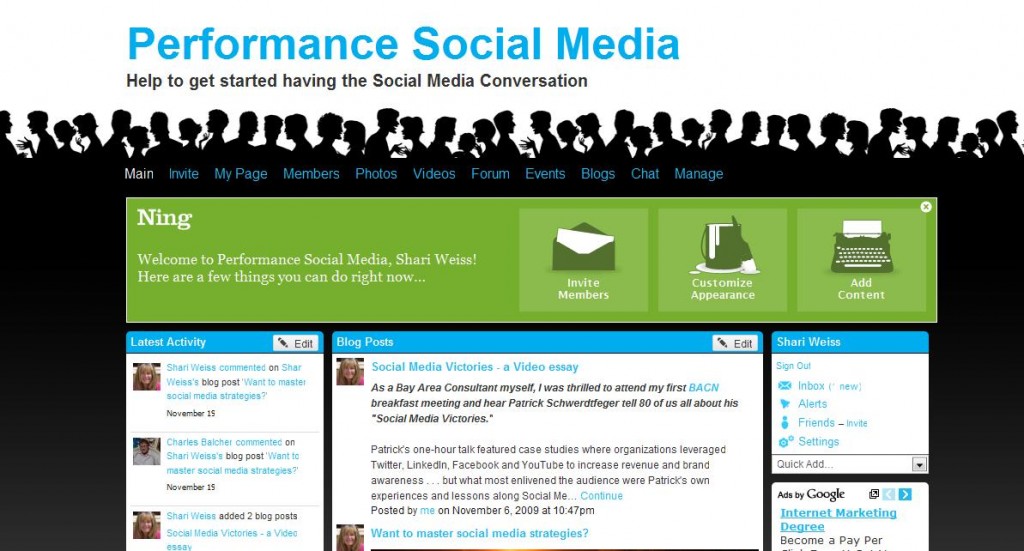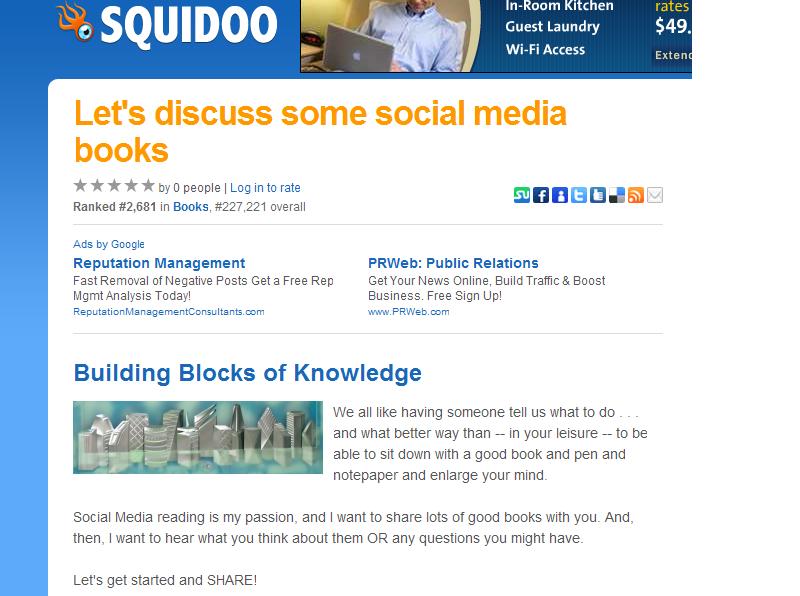Bay Area Consultants hear SOCIAL MEDIA TIPS from popular speaker Patrick Schwerdtfeger
Back by popular request, Patrick presented more detailed online marketing tactics — building from his earlier talk on social media basics delivered last fall.
Author of Webify Your Business, Patrick spoke at 127 events around the globe in 2009. He shares social media success stories and practical strategies that inspire his audiences to go home and start creating plans of their own.
Below are 14 videos taken at the 90-minute presentation — from how to introduce yourself online to maximizing the professional opportunities on LinkedIn.
First, however, read the reactions from 10 of the more than 70 entrepreneurs in attendance.
I went into Patrick’s presentation knowing nothing about social media except that someone told me I was being reviewed on Yelp and joined LinkedIn because I was invited.
The one step I decided to implement was making a video for YouTube on how to do something specific in QuickBooks and start a blog to connect to my website.” — Pamela Lyons
Pamela teaches companies to leverage technology with their accounting practices using training, part time CFO, and bookkeepers onsite or remote. She takes QuickBooks to the next level to get results on your financial information.
“I’m going to follow-up on Patrick’s suggestion that we choose one standard head-shot photo to use in all of our online media outlets, as these will become our brands.” — Steven Tulsky
Steven offers financial Expertise for the Nonprofit Sector: The Benemetrics Consulting Group partners with nonprofit executives, directors, and finance staff to develop, evaluate, and communicate meaningful financial information, enabling them to implement good decisions that assure the financial well being and mission effectiveness of their organizations.
“Patrick’s presentation showed me that “doing” social media could be easy and fun! The big thing – get started!
The best tip for me was to create educational videos for You Tube, leverage them with similar related videos, match my current branding and then, get the word out there. Patrick is a great speaker – he loves “this stuff” and enjoys sharing the information.” — Deborah Myers
An acupressurist and Health Educator, Deborah unravels the mysteries of the body, bringing health and wellness to your personal and business life.
” Patrick has a wealth of useful information on Social Media Marketing; he has a gift for simplifying and giving practical tips. I immediately put to use his tips on doing a YouTube video.” — Diane Parente
Diane’s company Image Development & Management, Inc (IDMI) is The Professional Image Resource based in San Francisco providing services and products to fit every aspect of your image from visual to verbal.
“Here is my One Tip that we will be implementing: Adding a Yelp profile for our company and asking clients to write reviews.” — Terry Gault
Terry’s organization, The Henderson Group, helps business professionals transition into high visibility roles where communication skills are critical for success.
“One powerful tip I got from Patrick’s presentation is the fact that there are 400 million users on Facebook and that I need to start utilizing that resource. As a result of hearing him speak, I plan on creating a Fan Page on Facebook to help direct people to my website.” — Carrie Cheadle
Carrie has dedicated her career to helping athletes of all levels enhance their athletic experience by coaching them on how to approach their sport with more confidence, more enjoyment, and empowering them with the necessary support and skills to achieve their goals and perform to their potential.
“Social media can be so overwhelming – lots of choices with little understanding of real marketing value. Patrick’s presentation made both sense and cents, as I feel I can better implement social media to my advantage.” — Bruce Burtch
Bruce, the Cause Marketing Catalyst, develops cause marketing campaigns, joining for-profit and nonprofit organizations, with the focus of building win-win partnerships for the greater good.
“Instead of getting overwhelmed by social media, I plan to commit to taking one step forward each week! ” — Carol Seebach
Carol’s company Executive Gears provides support for executives and boards to bring order and efficiency to organizations.
“The main idea I took away from the presentation was to be redundant on the web: Facebook, LinkedIn, Plaxo, YouTube, all are excellent platforms for getting the word out about your business. I feel more confident about moving forward with this branch of our marketing efforts after listening to Patrick.” — William Buchanan
Bill’s 51 years of federal law enforcement experience combined with an efficient business model assure our corporate and law firm clients the highest quality of investigative services.
“I suppose I have to put my business on Yelp, which I have resisted doing for years. It still doesn’t seem to me like the kind of place people look for my type of services. (After last time, I created a Facebook Fan Page for the Podcast Asylum, though I refuse to have a personal profile on Facebook.) Patrick is a convincing guy.” — Sallie Goetsch
SOCIAL MEDIA VICTORIES – and how to win them
- More and more people are searching online every single day
- Driving traffic to a website is a difficult challenge
- Introducing yourself online will spread your influence
Outrun your competition
- It’s not difficult to outshine your online competition
- Do more than them
- Example: 40% of Tweets are useless babble
Raging Rivers – post info for people to find
- Understand how every action online can support your business objectives
Digital Divide — embrace the new media
- Centerpiece is your blog
- Your website meets your customers on a different level
- Examples of how “age” shapes opinions:
“If an online transaction goes wrong, I have no recourse VS. If online transaction goes wrong, I can personally destroy their business”
United Breaks Guitars — online payback for customer neglect
- YouTube gets real results
- Lots of things may fail, but some things really work
Conversations are Markets
- Is marketing dead? Of course not, but it is changing
- Find the conversation and participate
- Awareness leads to interest . . . and more
Facebook — and what to do with it
- Your headshot online becomes your brand
- Difference between Profiles, Groups & Fan Pages
- Facebook ranks really HIGH on Google
- Google Juice is the SEO value of what we are talking about
Building Facebook Pages
- Do people read updates?
- Posting on the Walls of friends
- Increasing number of companies have Facebook rather than traditional website
- You can create Groups & Fan Pages for your business on Facebook
Tagging People in Photos
- Successful winery case study
- “That looks like fun” – Fun events to share
Get to 300 Facebook Fans
- Viral effect of people engaging will grow your page
- Run campaigns and ask questions to grow exposure
- Interactions lead to trust
Facebook URL & stunt that “worked”
- Losing friends and gaining Whoppers
LinkedIn – searchability
- Stats
- Excellent Google visibility
- Allows for precision email communication
- Go to Google: search for LinkedIn success stories
- Make sure technical keywords are included in profile
Maximizing your LinkedIn profile
LinkedIn Recommendations
- Mixed views on recommendations, but get them
Having a LinkedIn Profile – is not marketing
- You have to work
- Ask and answer questions
- Join and create groups
- Post your blog URL in group news items
Members of BACN are independent consultants who are interested in expanding their professional practices through effective networking and professional development programs sponsored by BACN. Attend a BACN meeting to become a member.






















